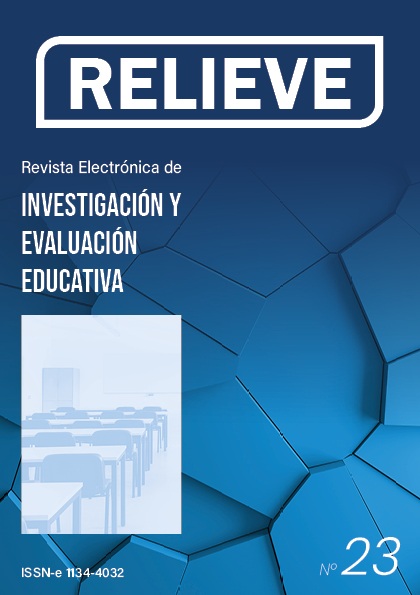Estilos de aprendizaje en estudiantes universitarios y enseñanza centrada en el aprendizaje
##plugins.pubIds.doi.readerDisplayName##:
https://doi.org/10.7203/relieve.23.2.9078关键词:
Aprendizaje centrado en el alumno, Estilos de aprendizaje, Aprendizaje Profundo, Autorregulación, Estudiantes universitarios摘要
El objetivo de este trabajo era valorar el impacto de los métodos centrados en el aprendizaje, implementados por cuatro profesores/as, en los estilos de aprendizaje de los alumnos de la asignatura de Procesos y Contextos Educativos en el Máster de Educación Secundaria de la Universidad de Valencia. También se pretendía analizar la valoración del alumnado sobre los métodos utilizados. La muestra fue de 117 estudiantes, que cursaban estos estudios durante el curso 2014-15, repartidos en cuatro grupos de cuatro especialidades diferentes. Se usó un diseño cuasiexperimental, con medidas de pretest/postest, mediante el cuestionario ILS (Learning Styles Inventory) de Vermunt (1994); además, el alumnado valoró los métodos utilizados por sus profesores mediante un cuestionario cuantitativo. Los profesores utilizaron métodos centrados en el aprendizaje con diferentes formatos metodológicos en los cuatro grupos. Se constataron mejoras significativas en un número importante de las variables que analiza el cuestionario (aprendizaje profundo, autorregulación, orientación centrada en el interés personal, uso del conocimiento, cooperación, etc) en los cuatro grupos, siendo las diferencias mayores en los grupos 1 y 4 que en los grupos 2 y 3. Las comparaciones entre los grupos reflejaron diferencias significativas en el pretest entre los cuatro grupos, que no se dieron en el postest, igualándose los grupos. Los alumnos valoraron positivamente los métodos utilizados. Los resultados corroboraron la influencia positiva de los métodos centrados en el aprendizaje en los estilos de aprendizaje de los estudiantes, y aportan ideas para la mejora de los procesos de enseñanza-aprendizaje del alumnado universitario.##plugins.generic.usageStats.downloads##
##submission.downloads##
已出版
##submission.howToCite##
期
栏目
##submission.license##
Los autores ceden de forma no exclusiva los derechos de explotación de los trabajos publicados a RELIEVE (a los solos efectos de favorecer la difusión de los artículos publicados:firmar contratos de difusión, de integración en bases de datos, etc.) y consienten que se distribuyan bajo la licencia de Creative Commons Reconocimiento-Uso No Comercial 4.0 International (CC-BY-NC 4.0), que permite a terceros el uso de lo publicado siempre que se mencione la autoría de la obra y la fuente de publicación, y se haga uso sin fines comerciales.
Los autores pueden llegar a otros acuerdos contractuales adicionales e independientes, para la distribución no exclusiva de la versión del trabajo publicado en esta revista (por ejemplo, incluyéndolo en un repositorio institucional o publicándolo en un libro), siempre y cuando se cite claramente que la fuente original de publicación es esta revista.
La mera remisión del artículo a RELIEVE supone la aceptación de estas condiciones.














